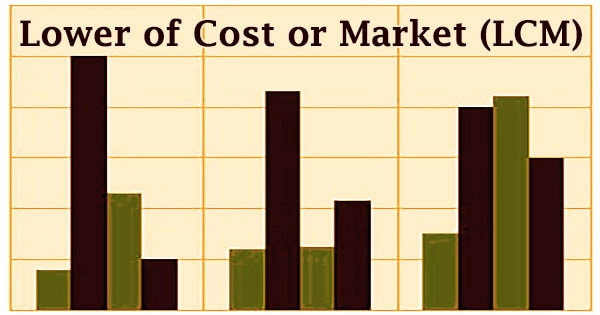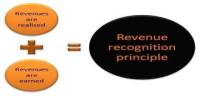Lower of cost or market (LCM or LOCOM) is a method for valuing inventory that is mandated by U.S. GAAP (Generally Accepted Accounting Principles). Ending inventory is often reported at historical cost. However, there are situations when the ending inventory’s original cost exceeds its net realizable value, and the inventory loses value.
When valuing a company’s inventory, this technique stipulates that it be recorded on the balance sheet at either the historical cost or the market value. The carrying value of inventory is reduced and recorded on the balance sheet if its value has declined below its historical cost. The term “cost” refers to the expense of purchasing inventory, whereas “market value” refers to the cost of replacing inventory.
The replacement cost must be greater than or less than the net realizable value minus a regular profit margin. A good’s value can change over time. This is significant because the lower of cost or market technique can be used to record a loss if the price at which inventory can be sold goes below the net realizable value of the item, resulting in a loss for the company.
The entire dollar amount allocated to the inventory on hand is known as inventory valuation. The cost of inventory is the amount paid to acquire it. When a corporation buys inventory, it is recorded as a cost on the balance sheet. The LCM approach accounts for the fact that the value of a good can change over time.
However, the inventory’s worth may decline or appreciate over time. To some extent, the changing value of inventory must be accounted for in order to improve the credibility of financial statements. The total cost of an inventory item includes the purchase price, shipping expenses, storage fees, and any additional expenditures that are directly related to the item.

The LCM method can be used to record a loss if the price at which inventory can be sold falls below the net realizable value of the item, resulting in a loss. Because time can bring about the previous conditions, the rule is more likely to apply when a business has maintained goods for a long time.
It would overestimate the company’s assets and mislead users if the inventory value was not evaluated to the appropriate amount. The “current market price” is defined as the inventory’s current replacement cost, as long as it does not exceed net realizable value; also, it must not be less than net realizable value, less the normal profit margin.
Companies can declare losses by writing down the value of damaged inventory goods using the lowest of cost or market technique. If the loss is non-material, it is charged to “Cost of goods sold” (COGS), and if it is material, it is charged to “Loss on the reduction of inventory to LCM.” The replacement cost of inventory, or the amount of money it would take to replace it on the open market, is what the market value of inventory is.
The LCM method is a part of the GAAP regulations that are employed in both domestic and international business. Almost all assets are valued at their acquisition cost when they enter the accounting system. The other element of this concept, the market, is a little more complicated. The amount that would have to be paid to replace a unit of inventory with an identical product is referred to as a market.
During the nineteenth century, the lower of cost or market idea became part of standard accounting practice in England. Because assets were assessed on a going-concern basis rather than the price at which they were obtained, the lower of cost or market was considered fair. The net realizable value of inventory is the sale price minus any expenditures associated with preparing it for sale.
Companies whose products become obsolete are typically subject to the lower of cost or market rule. Lower of cost or market was not a popular method for valuing factory inventory in the United States during the nineteenth century. Due to its lack of rationality, the concept was difficult for Academic Accountants to embrace.
The rule also applies to products that lose value as a result of a declining current market price, which is defined as the current cost of replacing obsolete inventory, as long as the market price does not exceed the net realizable value, which is essentially the projected selling price minus disposal fees. A normal profit margin is an average difference between the inventory’s cost and sale price. Such replacement cost constraints establish a replacement cost floor and ceiling.
The market value can be represented by three different values: the inventory replacement cost, the net realizable value (sometimes known as the “ceiling”), and the “floor” (the difference between the net realizable value and the normal profit). The LCM rule was recently amended to make things easier for organizations that don’t use the retail or last-in, first-out methods. Companies’ financial statements can be difficult to compare since the lowest of cost or market strategy requires them to employ three different market values.
Information Sources:
















